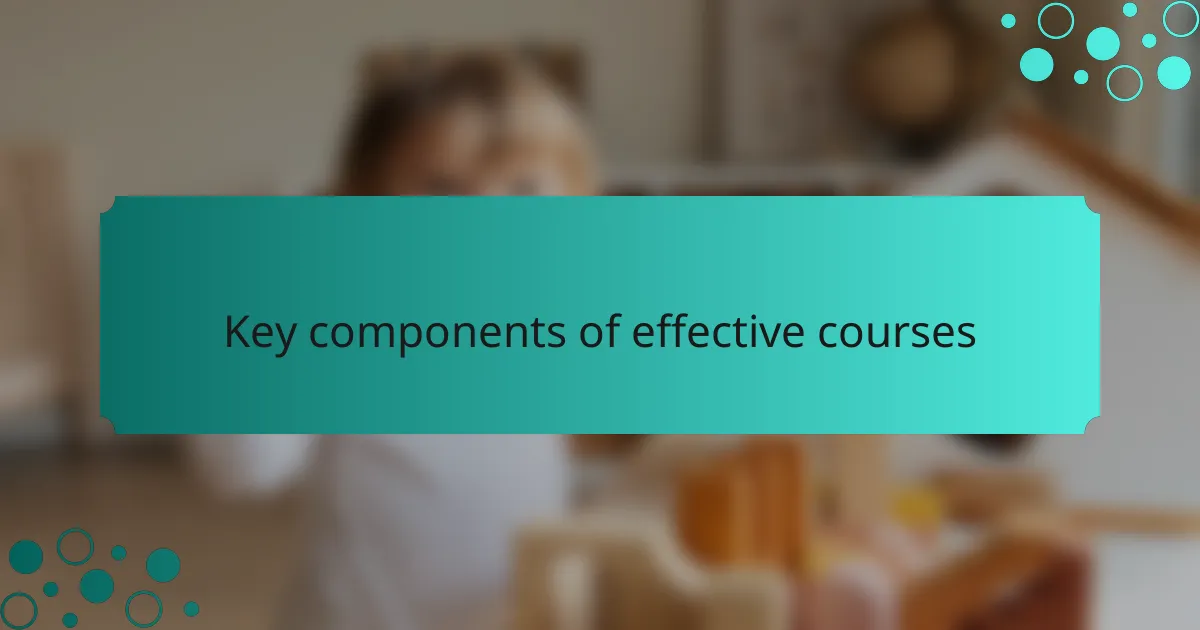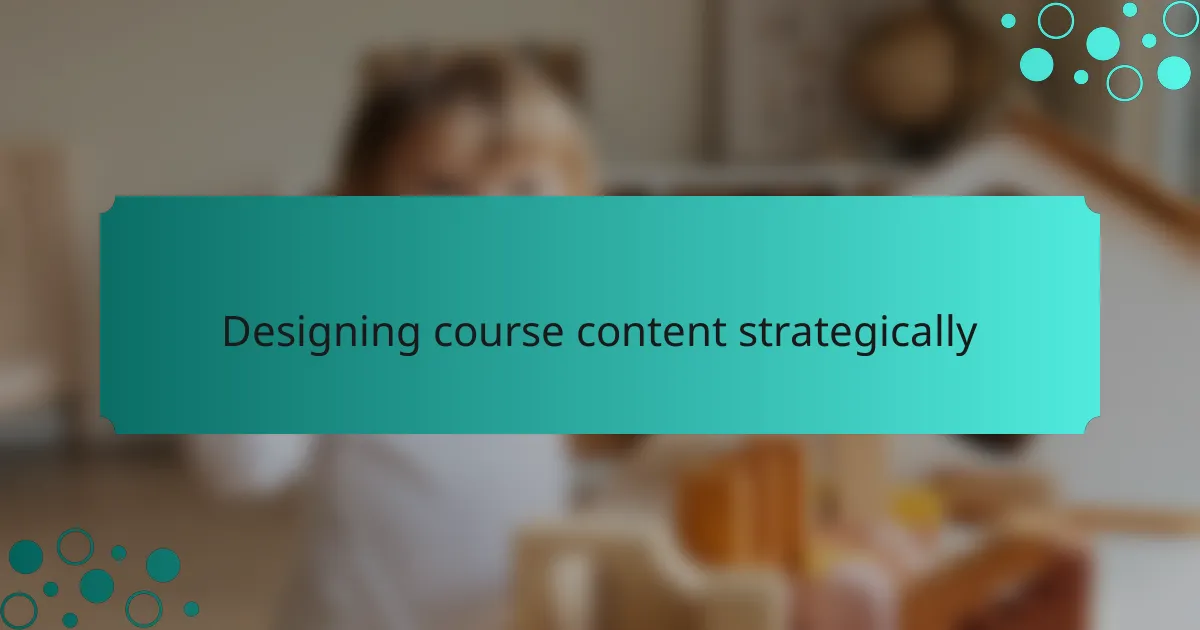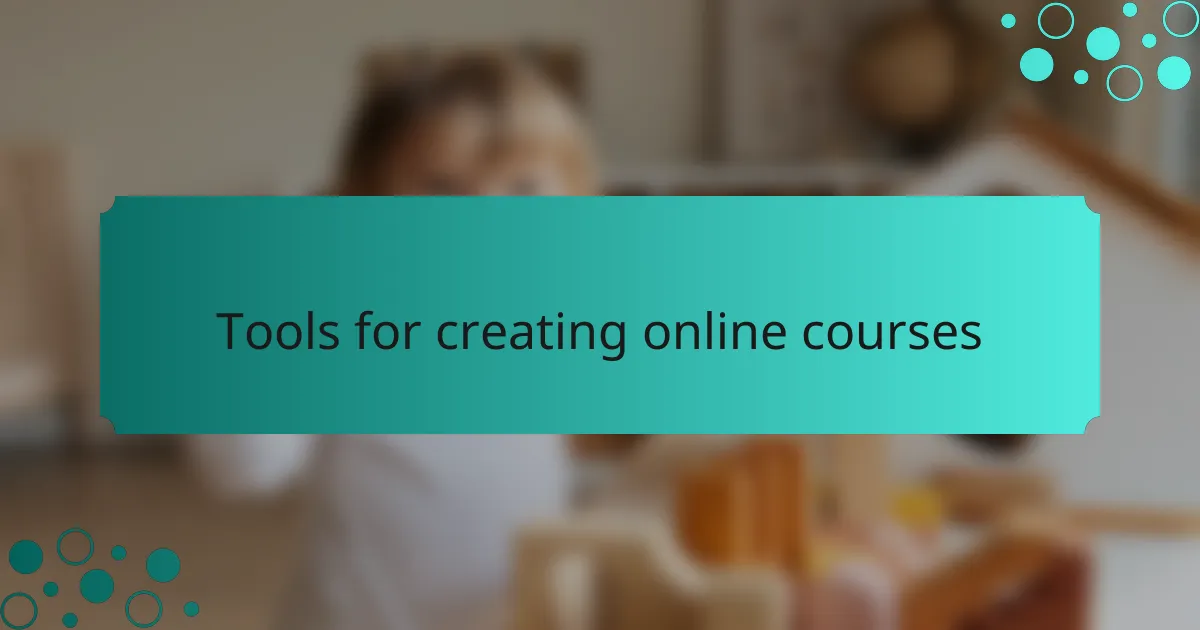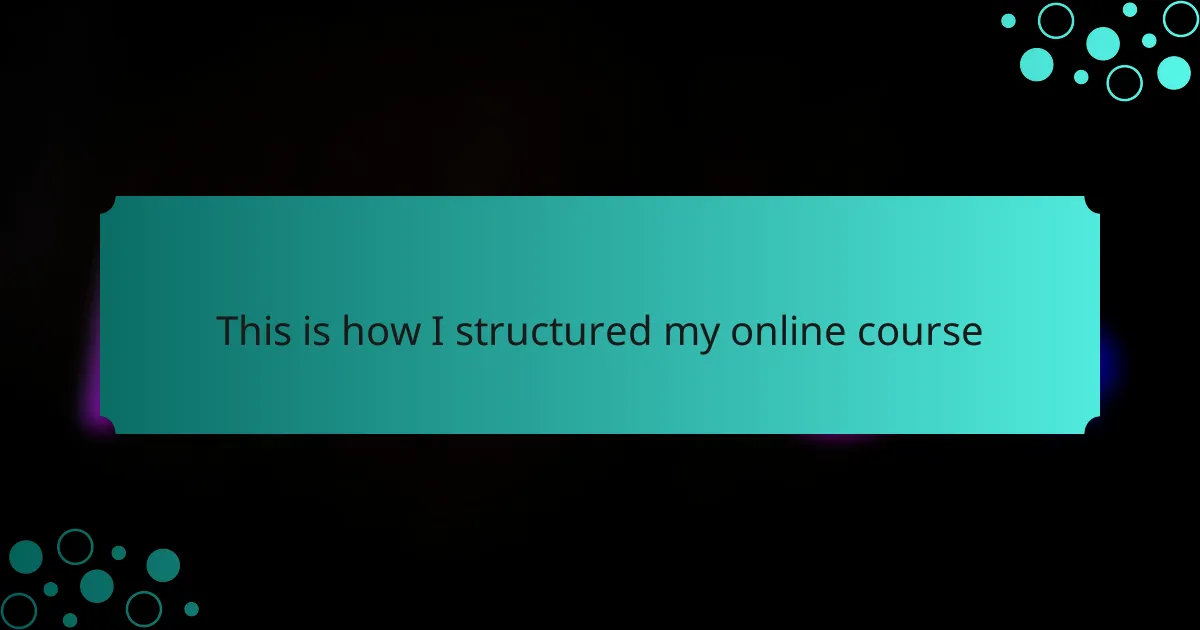Key takeaways
- Effective online courses prioritize clear structure and accessibility to enhance learner engagement and understanding.
- Incorporating diverse teaching methods and interactive elements, such as quizzes and real-world projects, caters to different learning styles.
- Utilizing the right tools can significantly improve the course creation process and student experience.
- Regular feedback and storytelling foster a sense of community and increase student investment in their learning journey.

Introduction to online courses
Creating online courses has become a valuable way to share knowledge and reach a wider audience. I remember my excitement when I first launched my programming course; it felt like opening a new door to connect with learners on a global scale. The flexibility of online education allows me to teach concepts that I’m passionate about, while also tailoring my lessons to cater to diverse learning styles.
In my experience, the key to a successful online course lies in its structure and accessibility. Ensuring that my course material is organized and engaging helps learners navigate through complex programming topics with ease. After all, the goal is to inspire and educate others, and I believe a well-structured course can make all the difference.
Here’s a comparison of traditional and online courses that reflects my journey:
| Aspect | Traditional Courses | Online Courses |
|---|---|---|
| Flexibility | Fixed schedules | Self-paced learning |
| Accessibility | Geographical limitations | Global reach |
| Engagement | Face-to-face interaction | Varied multimedia resources |

Benefits of programming tutorials
When I first started creating programming tutorials, I was amazed at the variety of benefits they offer not just to learners, but to instructors as well. It’s a rewarding experience to watch someone grasp a concept they previously struggled with. Seeing the “aha” moment on a learner’s face is one of the most fulfilling feelings you can experience. Plus, programming tutorials foster a sense of community, where learners can share their challenges and triumphs, supporting each other along their coding journey.
From my experience, here are some key benefits of engaging with programming tutorials:
- Skill Development: They allow learners to build practical skills at their own pace.
- Accessibility: Tutorials make complex programming concepts more approachable for everyone.
- Diverse Learning Styles: They cater to different learning preferences, whether visual, auditory, or kinesthetic.
- Immediate Feedback: Many platforms now provide interactive coding exercises, offering instant feedback to help solidify knowledge.
- Community Engagement: Participants can connect and collaborate, enhancing the learning experience through shared insights.

Key components of effective courses
When designing my online course, I found that breaking down complex topics into manageable pieces was crucial. It reminded me of when I first ventured into programming; I often felt overwhelmed by the enormity of new concepts. By structuring the course with clear, concise lessons and logically sequenced modules, I aimed to replicate that sense of steady progression, helping my students feel empowered rather than lost.
Moreover, including interactive elements like quizzes and hands-on projects enriched the learning experience. I recall how much more I retained knowledge when I could apply it immediately. It’s incredible to see students engage actively, transforming passive learning into a dynamic experience. Here are the key components that I believe made a significant impact:
- Clear learning objectives for each module
- Short, bite-sized lessons to enhance comprehension
- Interactive elements such as quizzes and discussions
- Real-world projects to apply learned concepts
- Continuous feedback mechanisms to assess progress
- Community-building features, like forums or study groups

Designing course content strategically
When I approached designing course content, I found that establishing a clear roadmap was essential. Mapping out the learning journey from start to finish not only kept me on track but also provided my students with a sense of direction. Have you ever embarked on a project without a plan? It can be daunting! I always felt that a well-defined outline would help learners understand what to expect, allowing them to focus better on mastering each topic.
Incorporating a mix of formats was another strategy that paid off. For instance, I included video lectures, written materials, and interactive coding exercises. I remember receiving feedback from a student who told me how much they appreciated having multiple ways to absorb the information. This flexible approach caters to different learning styles, ensuring that no one feels left behind as they dive into complex programming topics.
Lastly, I consciously made my content relevant and relatable. I shared personal stories about my own programming challenges and breakthroughs. This connection not only humanized the content but also motivated my students to persist through their struggles. Have you ever felt more inspired after hearing someone else’s story? I truly believe that sharing experiences creates a powerful bond, encouraging students to engage more deeply with the course material.

Tools for creating online courses
When I set out to create my online course, I quickly realized that choosing the right tools was essential. Initially, I felt overwhelmed by the plethora of options available, but after some trial and error, I discovered some gems that really enhanced the learning experience. For instance, using a robust platform like Teachable allowed me to craft an intuitive layout that made navigation a breeze for my students.
As I explored different tools, I found that each brought its unique strengths to the table. Some streamlined video creation, while others efficiently handled quizzes and assignments. This variety not only helped me deliver content effectively but also made the process enjoyable. Here’s a list of tools that stood out during my course creation journey:
- Teachable: Great for course management and student engagement.
- Camtasia: Perfect for screencasting and video editing.
- Canva: Useful for creating visually appealing graphics and course materials.
- Google Forms: Excellent for quizzes and collecting feedback.
- Slack: Fantastic for fostering communication among students.
Choosing the right tools can transform the course-building experience from daunting to empowering. In my case, these resources not only supported my technical needs but also sparked my creativity.

Personal experience in structuring
When I set out to structure my online course, I leaned heavily on my previous teaching experiences. I wanted to create something that not only delivered content but also engaged students actively. One particular challenge was organizing the material in a way that built upon itself, allowing learners to progress seamlessly from fundamental concepts to more complex topics.
I vividly remember the first course I designed, where I overlooked the importance of pacing. It was a learning curve to find the right balance between information density and learner absorption. I found that incorporating real-world coding examples made theoretical concepts click for my students, enhancing both their understanding and enjoyment of the course.
Here’s a comparison table that illustrates the approach I took in structuring my course:
| Aspect | My Approach |
|---|---|
| Content Flow | Progressive building of concepts |
| Engagement | Real-world examples and interactive exercises |
| Feedback | Regular check-ins and quizzes |
| Accessibility | Clear, jargon-free language |
| Community | Discussion forums for peer support |

Tips for enhancing learner engagement
Engaging learners in an online course can be a game-changer, and I’ve found that weaving storytelling into lessons brings about remarkable results. When I share my own journey, including both my struggles and triumphs with programming, it makes the content relatable. Have you ever felt inspired by a story that mirrored your own experiences? This connection fosters a deeper engagement, prompting learners to invest more in their own educational journey.
Interactive elements play a crucial role in enhancing learner engagement as well. I vividly recall a scenario where I introduced coding challenges mid-lesson. The excitement from my students was palpable. They were no longer just passive observers; they became active participants competing to solve problems. This not only built a sense of community but also encouraged collaboration, where learners could discuss solutions amongst themselves, tapping into each other’s strengths.
Another tip I swear by is incorporating regular feedback mechanisms. I remember a time when I rolled out a quick survey after completing a module. The insights I gained were invaluable—not only did it help me refine my content, but it also made my students feel heard. When learners see their feedback being implemented, it fosters a sense of ownership and commitment to the course. Isn’t it empowering to know that their voices matter?
